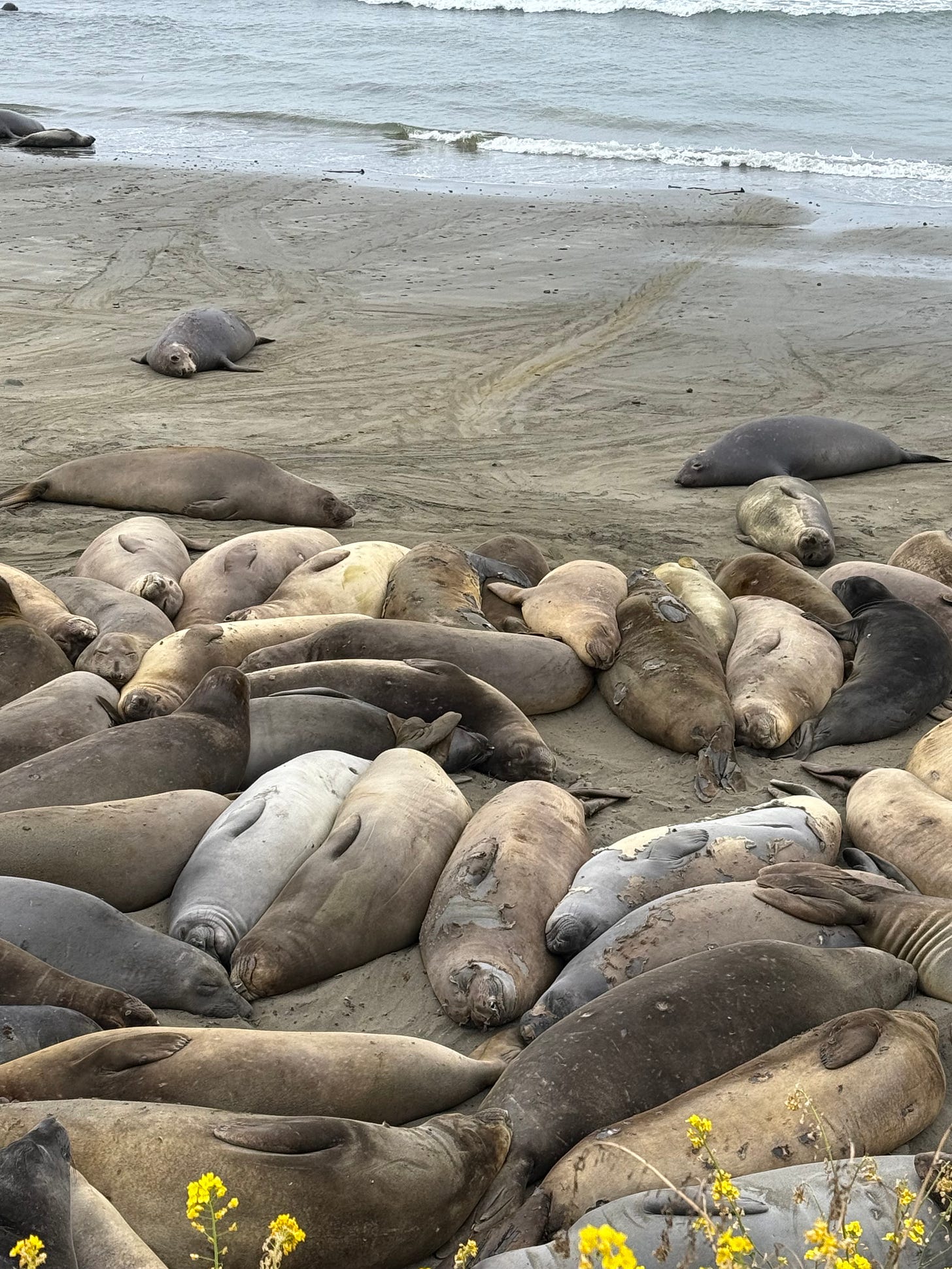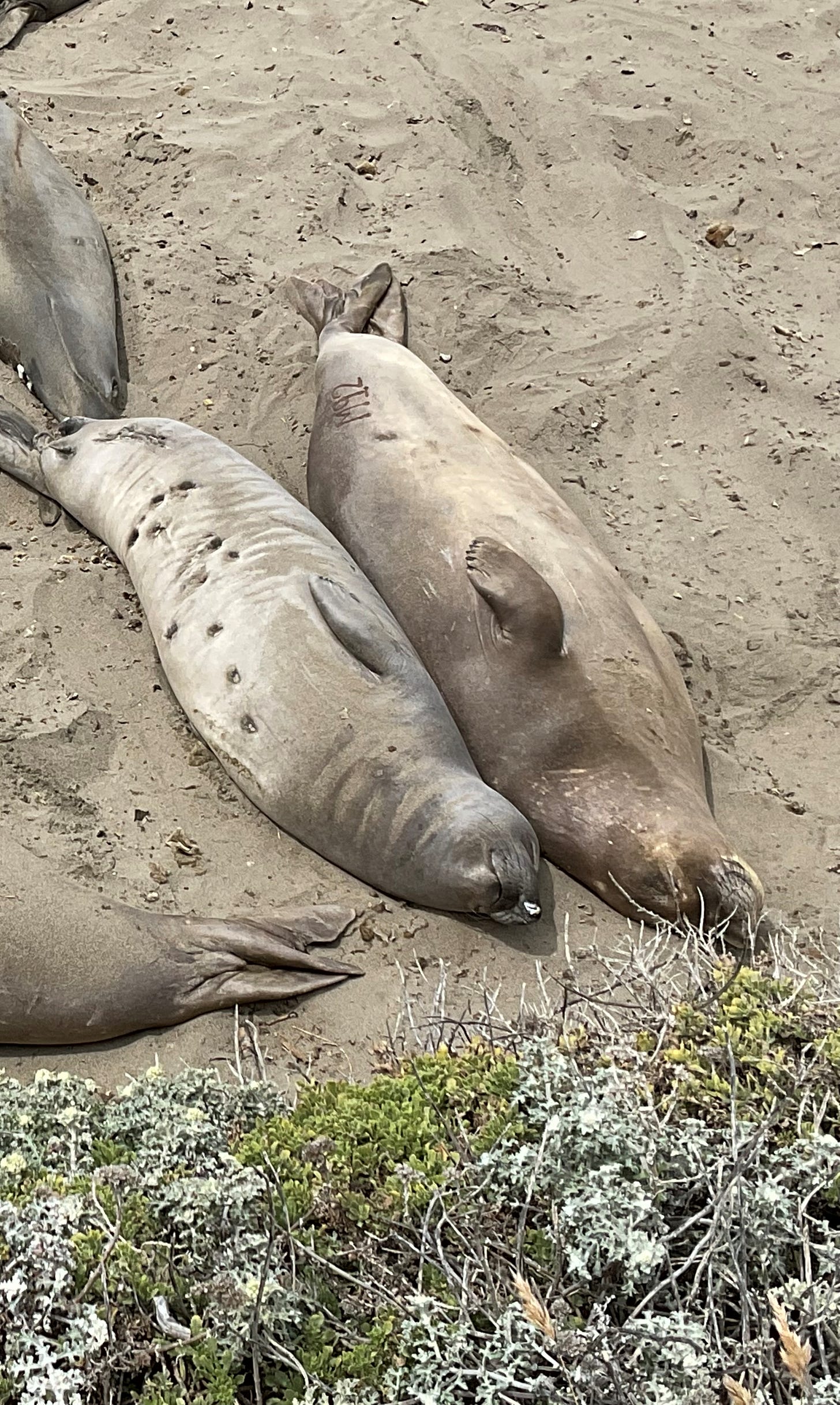The spring months bring more seals to Piedras Blancas than even the winter breeding season. All 5,000 or so adult females return, along with five thousand or so non-breeding juveniles. It’s the busiest beach season for these migratory seals.
The seals look ragged, like something is wrong with them. Their skin is peeling off. For northern elephant seals, it’s normal, the annual molt. They will be on the beach through June.
Berney LeBoeuf, in his book Elephant Seals: Pushing the Limits on Land and at Sea, recounts an incident from the 1960s, when elephant seals were unfamiliar to local residents. A woman called police to investigate the scruffy-looking seal on the beach near her house. The policeman who responded agreed that the seal was suffering, and shot it to relieve its misery. “Of course, the seal was fine,” he writes, “it was just molting, as residents came to learn with the increasing influx of seals in the following years.”
Molting
Elephant seals, like only one other seal (the Hawaiian monk seal), molt their skin annually in a few weeks. All other seals molt, but gradually, one hair at a time, like dogs, so it isn’t as noticeable.
Elephant seals form a new skin layer under the old skin. Blood stops supplying the old skin. It dies and peels off in pieces. Scraps of it skitter across the beach. Friends of the Elephant Seal docents have samples of it to show visitors. Children enjoy handling it. Adults are more dubious, extending a cautious finger for a touch.
The seals stop eating when they are on the beach at the rookery, fasting for that four weeks it takes for them to complete their molt. Female seals lose about a quarter of their body weight while they lie on the beach and let their skin peel off.
The new skin and hair underneath is gray. The hairs are short, but soon stand up and grow longer. Look for pearly gray seals next to brown and tan seals.
The skin begins to molt off around eyes and ears, old scars, and other body orifices. Then the belly and sides and back peel off. This seal’s shark bite scar starts molting around the edges.
Old scars remain, but temporary marks peel off with the skin. That’s one of the challenges of identifying seals for research study. Numbers bleached or dyed on the fur peel off when the skin molts. Resighting seals with dyed numbers before their skin peels off rarely happens. It depends on the luck of the seal being at a place and time when someone sees the mark and reports it.
This seal hasn’t molted off her mark yet. The seal next to her is pockmarked with cookie-cutter seal scars. Cookie-cutter sharks are small, less than two feet long, that attach themselves and spin around to take a plug of blubber, leaving behind that distinctive scar. Elephant seals, as this one shows, often have many such scars, suggesting that cookie-cutter sharks may travel in schools.
.








Christine, this is a fascinating insight into the routines of some important creatures. I always look forward to your takes on nature.